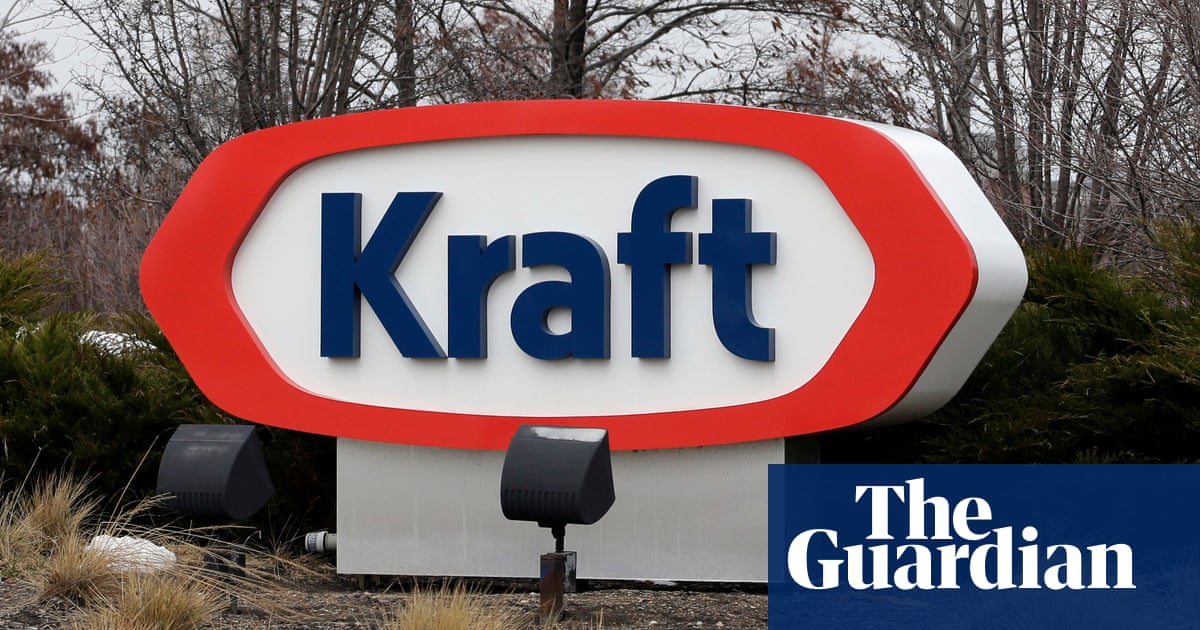US to spend $6bn to reduce carbon footprint of steel, ice cream and mac and cheese
US to spend $6bn to reduce carbon footprint of steel, ice cream and mac and cheese The Guardian US


The Biden Administration Announces $6 Billion Funding to Decarbonize US Industry Facilities

The Biden administration has announced a record $6 billion in funding to decarbonize US industry facilities, including plants that make cement and concrete, iron and steel, and food production plants such as those that produce mac and cheese and ice cream.
The industrial sector is responsible for approximately 25% of the nation’s emissions and has proven challenging to decarbonize due to its energy-intensive, large-scale operations.
The funding, which is sourced from the Inflation Reduction Act and the Bipartisan Infrastructure Law, will support 33 demonstration projects in more than 20 states. These projects will focus on iron, steel, aluminum, food and beverage, concrete, and cement facilities.
Key Projects:
-
Constellium in Ravenswood, West Virginia, will operate a first-of-its-kind zero-carbon aluminum casting plant and install low-emission furnaces that can use clean fuels such as hydrogen. The company produces aluminum for various products, including cars and planes.
-
Kraft Heinz will decarbonize food production at 10 facilities by installing heat pumps, electric heaters, and electric boilers. This includes their facility in Holland, Michigan, where mac and cheese is produced.
-
Cleveland-Cliffs Steel Corporation in Middletown, Ohio, will retire one blast furnace, install two electric furnaces, and adopt hydrogen-based ironmaking technology. This project aims to eliminate 1 million tons of greenhouse gas emissions annually from the largest supplier of steel to the US automotive industry.
-
Heidelberg Materials US Inc will build a system that captures and stores carbon underground at its plant in Mitchell, Indiana. This project aims to capture at least 95% of the carbon dioxide released by the cement plant, preventing 2 million tons of carbon dioxide from entering the atmosphere each year.
In addition, over $20 million will be allocated to ice cream manufacturers in Tennessee, Missouri, and Vermont.
Significance of the Funding:
Jennifer Granholm, the energy secretary, stated that the technologies being funded are “replicable,” “scalable,” and will “set a new gold standard for clean manufacturing in the United States and around the world.” The funding aims to eliminate 14 million metric tons of pollution annually, which is equivalent to taking about 3 million cars off the road.
Mike Ireland, president and CEO of the Portland Cement Association, believes that the United States can be a leader in sustainable industrial practices. He suggests that the innovative cement and concrete technologies being scaled in the US can be adopted by developing countries in the Global South to build highways and buildings in a more sustainable way.
Todd Tucker at the Roosevelt Institute, the nonprofit partner of the Franklin D Roosevelt Presidential Library and Museum, highlights the importance of these initial projects in convincing industries and Wall Street that decarbonization is possible. Once proven successful, these technologies can be exported globally for a more significant climate impact.
Challenges in Decarbonizing Heavy Industries:
Decarbonizing the electricity and transportation sectors has been a focal point in the climate conversation, with generous federal subsidies supporting renewable energy and electric vehicles. However, cutting emissions in heavy industries that rely on fossil fuels for high heat and chemical reactions is more challenging.
According to Todd Tucker, demonstrating the viability of decarbonization in these initial projects is crucial for driving industry transition and gaining support from both the private and public sectors. Once the feasibility is established, strategies can be developed to address the remaining challenges.
-
Associated Press contributed to this report
SDGs, Targets, and Indicators
| SDGs | Targets | Indicators |
|---|---|---|
| SDG 7: Affordable and Clean Energy | Target 7.2: Increase substantially the share of renewable energy in the global energy mix | – |
| SDG 9: Industry, Innovation, and Infrastructure | Target 9.4: Upgrade infrastructure and retrofit industries to make them sustainable | – |
| SDG 13: Climate Action | Target 13.2: Integrate climate change measures into national policies, strategies, and planning | – |
| SDG 17: Partnerships for the Goals | Target 17.16: Enhance the global partnership for sustainable development | – |
1. Which SDGs are addressed or connected to the issues highlighted in the article?
- SDG 7: Affordable and Clean Energy
- SDG 9: Industry, Innovation, and Infrastructure
- SDG 13: Climate Action
- SDG 17: Partnerships for the Goals
The article discusses the Biden administration’s funding to decarbonize US industry facilities, which aligns with SDG 7 (Affordable and Clean Energy) and SDG 9 (Industry, Innovation, and Infrastructure). The funding aims to reduce emissions from the industrial sector, which contributes to climate change, connecting to SDG 13 (Climate Action). Additionally, the funding is supported by partnerships between the government and various industries, linking to SDG 17 (Partnerships for the Goals).
2. What specific targets under those SDGs can be identified based on the article’s content?
- Target 7.2: Increase substantially the share of renewable energy in the global energy mix
- Target 9.4: Upgrade infrastructure and retrofit industries to make them sustainable
- Target 13.2: Integrate climate change measures into national policies, strategies, and planning
- Target 17.16: Enhance the global partnership for sustainable development
The funding announced in the article aims to decarbonize US industry facilities, which contributes to achieving Target 7.2 of SDG 7. The upgrade of infrastructure and adoption of clean technologies in industries align with Target 9.4 of SDG 9. The efforts to reduce emissions and address climate change connect to Target 13.2 of SDG 13. Lastly, the partnerships between the government and industry stakeholders support Target 17.16 of SDG 17.
3. Are there any indicators mentioned or implied in the article that can be used to measure progress towards the identified targets?
No specific indicators are mentioned in the article that can be used to measure progress towards the identified targets.
Behold! This splendid article springs forth from the wellspring of knowledge, shaped by a wondrous proprietary AI technology that delved into a vast ocean of data, illuminating the path towards the Sustainable Development Goals. Remember that all rights are reserved by SDG Investors LLC, empowering us to champion progress together.
Source: theguardian.com

Join us, as fellow seekers of change, on a transformative journey at https://sdgtalks.ai/welcome, where you can become a member and actively contribute to shaping a brighter future.







